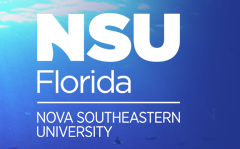Defense Date
5-2-2025
Document Type
Thesis
Degree Type
Master of Science
Degree Name
Biological Sciences
First Advisor
Jose Lopez, Ph.D.
Second Advisor
Andrew Ozga, Ph.D.
Third Advisor
Erik Neugaard, M.S.
Keywords
Southeast Florida Eastern Oyster, Crassostrea virginica, C. virginica habitat microbiome, New River South Florida Microbiome, GIS Southeast Florida Eastern Oyster (Crassostrea virginica) Range, Southeast Florida Water Quality
Abstract
Eastern oysters (Crassostrea virginica) are essential habitat-forming species that contribute significantly to coastal water quality due to their filter-feeding behavior. Unlike other coastal regions in the Gulf of Mexico and Northeastern United States, oysters are not commercially managed in Southeast Florida and as a result sparse data exists on locations of the Eastern oyster habitat. Similarly, the benefits of oyster reefs to water quality are also not fully documented in Southeast Florida. Although beneficial and often referred to as keystone habitat building species, populations of C. virginica are not currently listed as protected species so little work has been done to document their historical or current population sizes and establish healthy water quality and microbiome baselines near oyster populations. Due to the lack of information and protection of the species, scientists are unable to prepare for future population reductions or potential impact events in Southeast Florida which would further remove oyster populations resulting in reduced filtration of our waterways.
This study characterized water quality and the surrounding water microbiome of several C. virginica and non C. virginica sites within Southeast Florida through multiple methods. Video surveying and boundary validation of reported C. virginica populations was conducted in locations along The New River, Mayan Lake, and Lake Santa Barbara of Broward County and Dumfoundling Bay in Miami-Dade County. High throughput DNA sequencing with Illumina MiSeq16S ribosomal RNA (rRNA) amplicon methods were utilized to create barcoding for water microbiome analysis resulting in 8895 unique Amplicon Sequence Variants (ASV) across all samples. Analysis of the microbial populations was conducted during both wet and dry seasons and also at high and low tide. A total of 73 samples were collected for microbiome analysis and 13 water chemistry samples were collected. Six sites were surveyed: Delevoe Park, North Fork River Park, Cooley’s Marina, Church by the Sea, Pompano Marina, East Greynold’s Park with Grassy Water’s Preserve samples as control. Differences in the water microbiome were statistically significant between the wet and dry season, across the sampled sites and for oyster versus non oyster sites.
This study lays the groundwork for future multiphase water quality improvement projects, oyster recovery, relocation and habitat restoration efforts being led by local non-profit groups such as the South Florida Association of Environmental Professionals (SFAEP), Coastal Conservation Association, Urban Farming Institute (UFI) and the Global Invertebrate Genomics Alliance (GIGA).
NSUWorks Citation
Stacy Brown. 2025. Microbial Community and Water Quality Assessment of Crassostrea virginica Habitats in Southeast Florida. Master's thesis. Nova Southeastern University. Retrieved from NSUWorks, . (210)
https://nsuworks.nova.edu/hcas_etd_all/210.


